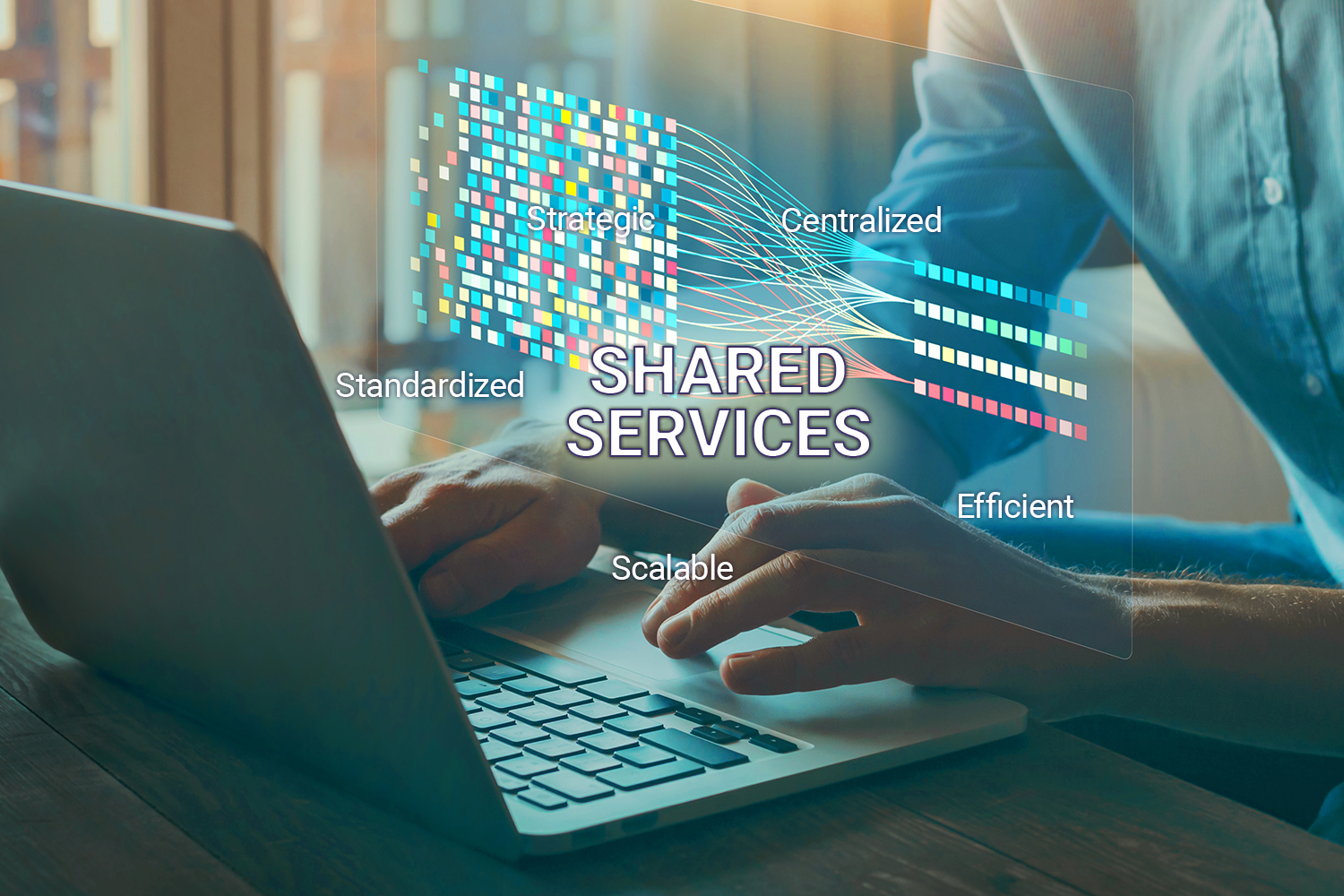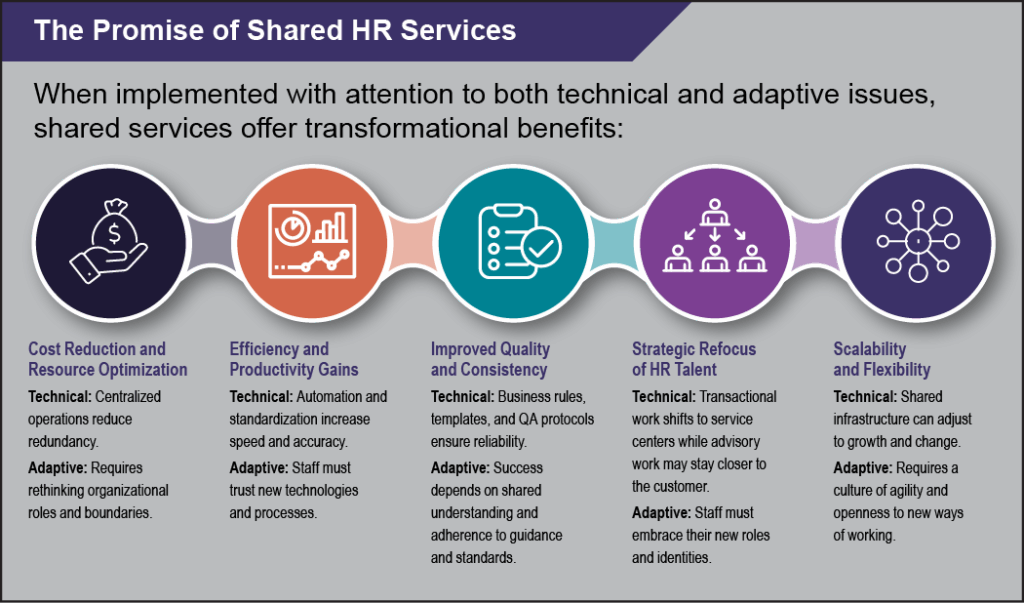
Written By

An Integrated Approach to Technical and Adaptive Challenges
By Mike Vajda, Michael Rogers, Alicia Rule, Sharon Ginley
As federal agencies face rising demands for efficiency, transparency, and accountability, Shared Human Resources (HR) Services have emerged as a powerful strategy to modernize workforce operations. When implemented thoughtfully, shared services can deliver substantial benefits—streamlining processes, improving service quality, reducing costs, and enabling HR professionals to focus on mission-critical advisory work. However, these benefits require more than new systems and standardized processes. Successful transformation demands a holistic approach that addresses both technical and adaptive challenges—and integrates them into a single, cohesive strategy.
Understanding the Dual Nature of the Challenge
Technical challenges are clear-cut and typically resolved through expertise, planning, and technology. These include:
Adaptive challenges, on the other hand, are people-centered and complex. They require shifts in behavior, mindset, and culture. These include:
Many efforts falter because they treat these challenges separately, handling technical work through implementation and relegating adaptive work to a siloed “change management” effort. These challenges are deeply intertwined and must be addressed through an integrated, mutually reinforcing approach.

Challenges to Implementation
Real transformation involves navigating interconnected technical and adaptive hurdles:
An Integrated Approach to Overcoming Challenges
Success requires blending technical solutions with adaptive leadership treating both as essential components of the same transformation journey. The following strategies address both dimensions:
Making Shared Services Stick
Shared HR Services can transform federal HR delivery—but only when technical systems and human dynamics are aligned. Sustainable change requires a clear vision, robust technology, disciplined processes, and above all, deep engagement with the people whose roles, routines, and relationships are evolving. A practical starting point is centralizing common transactional functions—such as personnel actions, benefits administration, and onboarding within shared service centers. Successful implementation of these core services lays the groundwork for expansion into more complex areas like classification and staffing. Also consider the life cycle of work, where interdependent processes like classification and position changing personnel actions handoff; possibly implementing partial processes in shared services while the move of more complex function is pending a future implementation.
Whether an agency is procuring commercial services, leveraging a federal service center, or modernizing internal operations, long-term success depends on addressing technical and adaptive challenges as an integrated whole. Engaging leaders and implementers with direct experience in both domains is essential for building momentum and delivering lasting results.